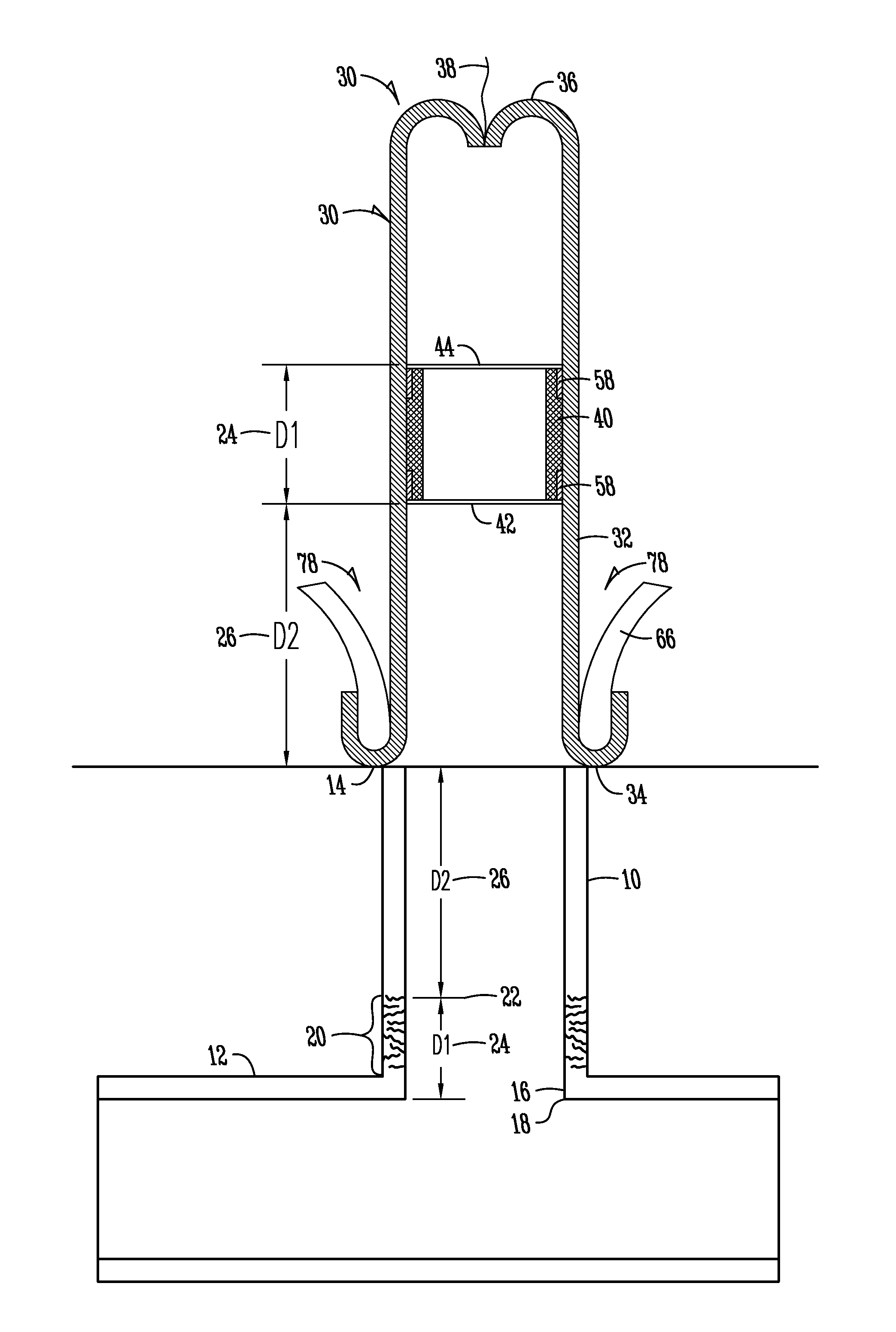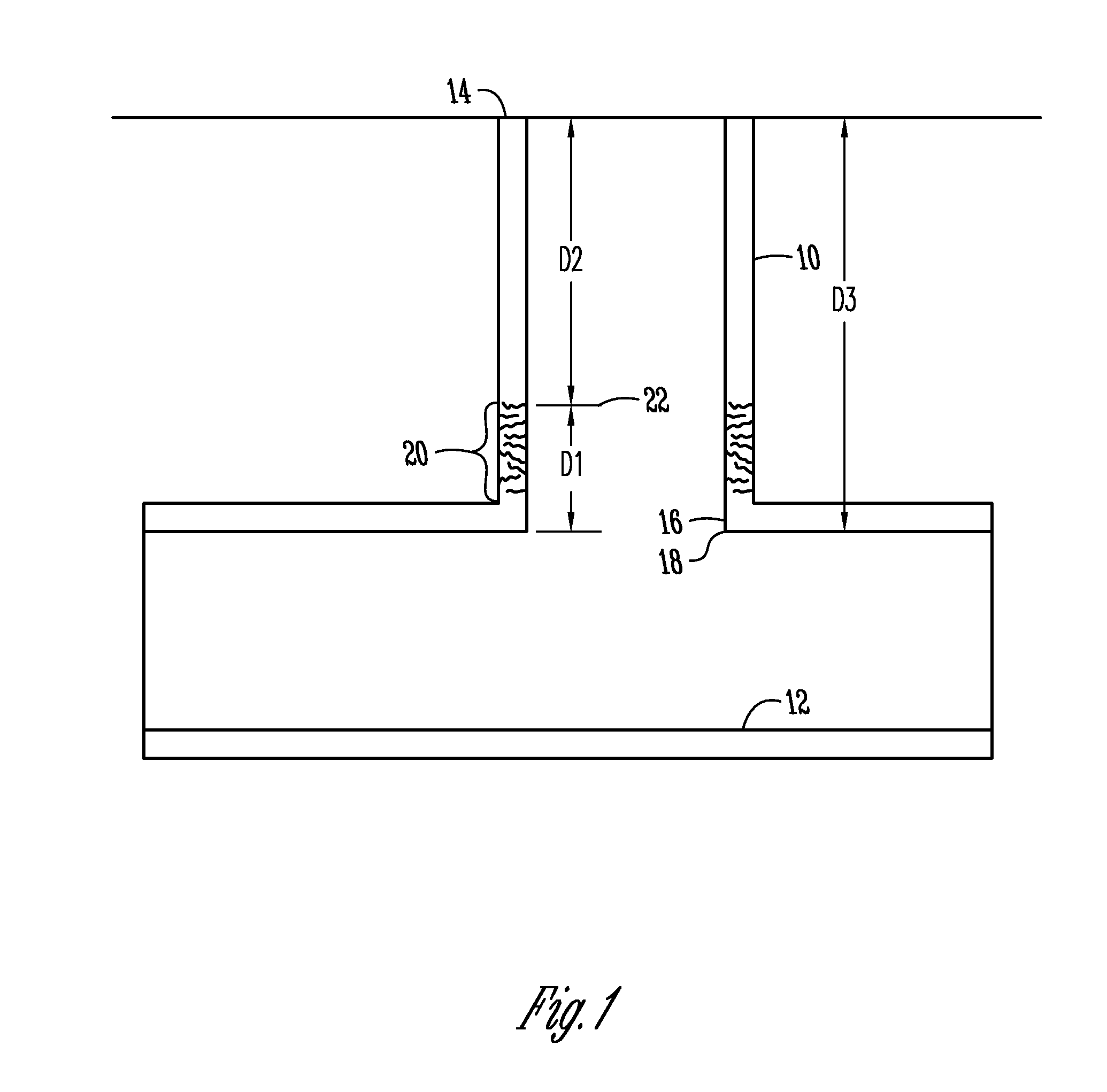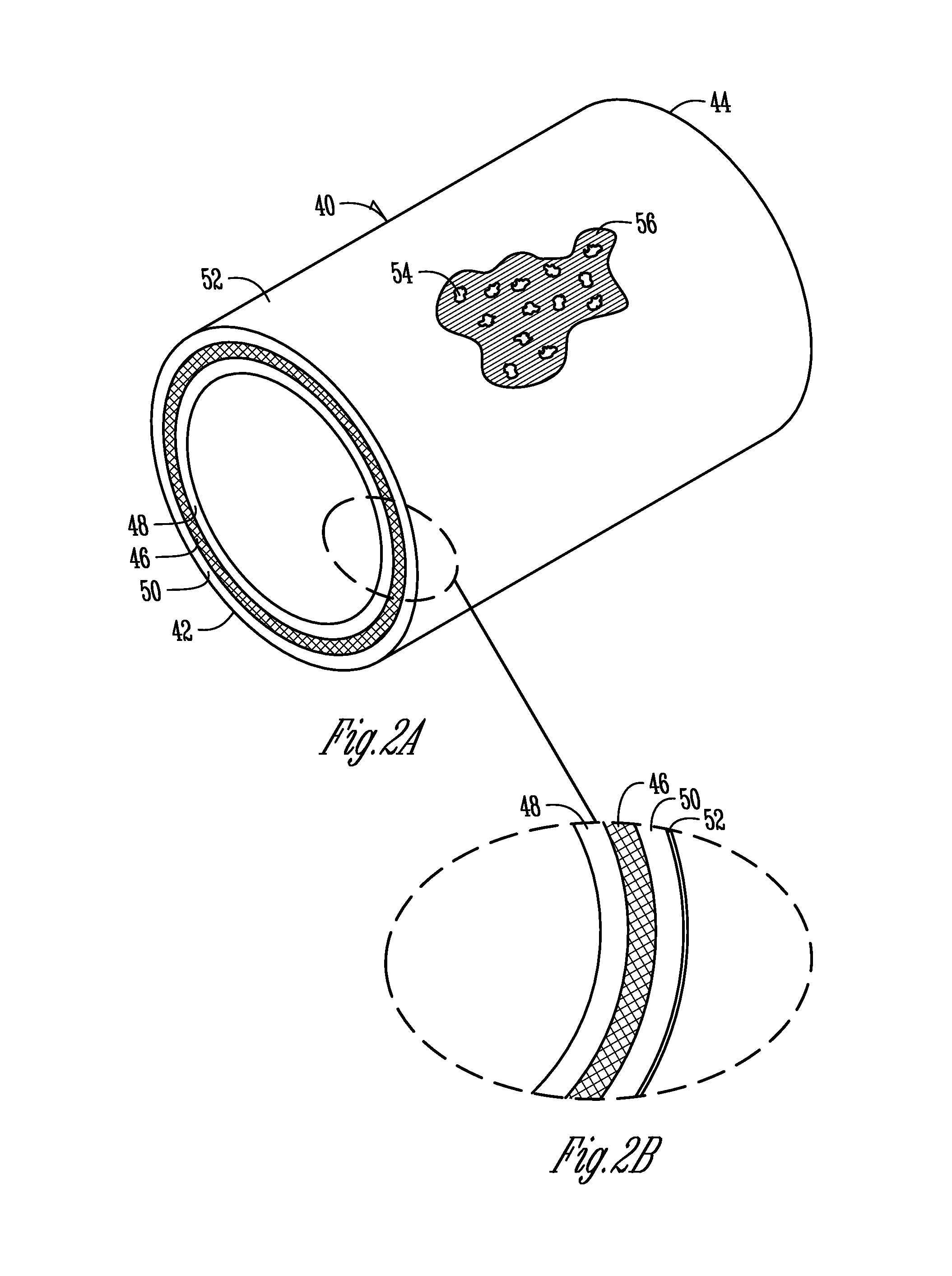Liner tube with non-stretching material
a non-stretching material and liner tube technology, applied in the direction of pipes/joints/fittings, pipe elements, mechanical devices, etc., can solve the problems of limiting radial stretching, not being able to use liner tubes, and not being able to use scrims
- Summary
- Abstract
- Description
- Claims
- Application Information
AI Technical Summary
Benefits of technology
Problems solved by technology
Method used
Image
Examples
Embodiment Construction
[0030]FIG. 1 is a sectional view of an exemplary structure of how a lateral pipe 10 and main pipe 12 are configured. Generally, a main pipe 12 would be located between two manholes (not shown) with the lateral pipe 10 branching off from the main pipe 12 towards a house, or other structure. While FIG. 1 shows the lateral pipe 10 branching from the main pipe 12 in a tee-shape, or approximately 90°, it should be appreciated that the lateral pipe 10 may also branch off from the main pipe 12 at other angles, including wye-shaped structures. As is further shown in FIG. 1, the lateral pipe 10 may have a first or launching end 14 and an opposite second end 16, which ends at a juncture 18 between the lateral pipe 10 and the main pipe 12. Therefore, the lateral pipe 10 has a length, shown as D3 in FIG. 1. Due to changing conditions around the lateral pipe 10 including a change in the soil, environment, or vegetation surrounding the lateral pipe 10, the lateral pipe 10 may form damage spots. I...
PUM
 Login to View More
Login to View More Abstract
Description
Claims
Application Information
 Login to View More
Login to View More - R&D
- Intellectual Property
- Life Sciences
- Materials
- Tech Scout
- Unparalleled Data Quality
- Higher Quality Content
- 60% Fewer Hallucinations
Browse by: Latest US Patents, China's latest patents, Technical Efficacy Thesaurus, Application Domain, Technology Topic, Popular Technical Reports.
© 2025 PatSnap. All rights reserved.Legal|Privacy policy|Modern Slavery Act Transparency Statement|Sitemap|About US| Contact US: help@patsnap.com



